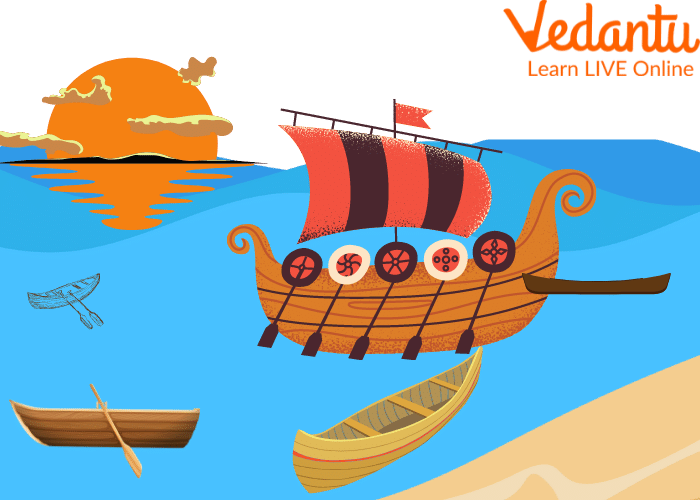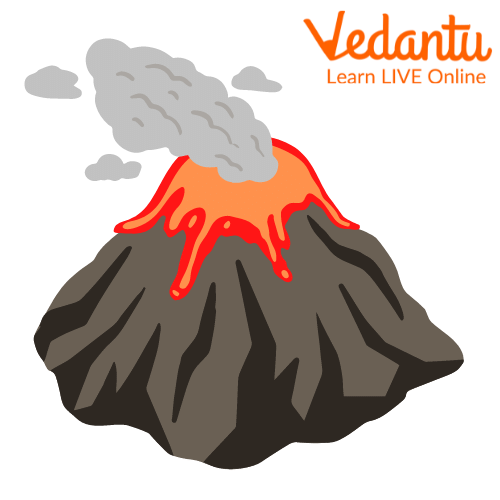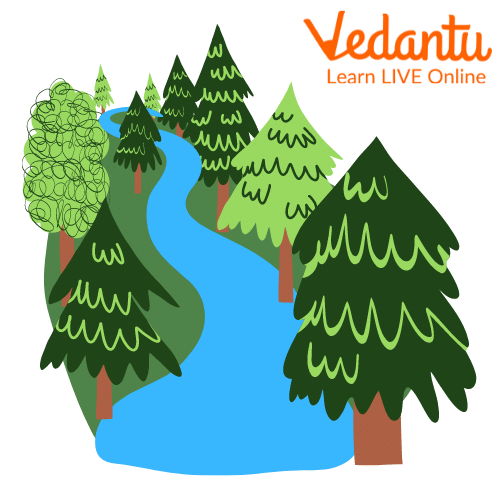




Key Features and Importance of Human Settlements in Our Society
Prehistoric humans used to roam here and there in search of food. They went to the place where their prey moved and where there were a lot of fruits and seeds to eat. Slowly, humans discovered fire and enjoyed cooked food. Thereafter, they started cultivating crops and therefore were no longer required to move places for greenery or prey. As humans slowly learned to grow crops, they started settling down near the rivers.
Although they knew the skill of growing crops and settled around the river, they still faced many problems like environmental changes. However, prehistoric humans adapted themselves in their habitat and developed and entered the advanced world.
Human Settlement Meaning
Human Settlement refers to a group of homes of any size or shape in which humans live. People may create houses and other structures for this purpose, and command some region or territory as their economic support base. Some examples of human settlement are: the settlement of fisheries along the sea coast, the settlement of tribal people in the forest area, or settlement of farmers in plains and along the banks of rivers, etc.
Origin of Human Settlement
Most anthropologists believe that humans initially came to East Africa's Great Rift Valley millions of years ago. Most anthropologists believe that humans initially came to East Africa's Great Rift Valley millions of years ago. They migrated from there to the Middle East, Asia, Europe, America, and Oceania. Below we will see the different sources and origin of human settlement.
Rivers
The first early human settlements were built near water so that they could get water easily for their daily life activities. Near the Indus river, Mohenjo-Daro was located; between Euphrates and Tigris, Mesopotamian civilization was located and near the Nile, the Egyptian civilization thrived.
There are a number of reasons why human settlements were located near rivers. First, they could get fresh water from the river to drink. They started crop cultivation, so the proximity of the river provided water for irrigation. The next was a flood, the flood left rich mud in Egypt, rich mud left by the annual flood in the Nile was good for the cultivation of barley and wheat.
Communication was also done through the rivers in earlier times. Earlier, people travelled from one place to another with the help of the river; they travelled with their ideas, religion and things, so the river helped the transfer of ideas, religion, culture and things from one place to another.

Ancient Boat
Volcanoes
The land is the other necessary feature for human settlement and farming. Around volcanoes, archaeologists found many earlier human settlements. Some archaeologists believed that earlier humans might have settled around volcanoes because the land around volcanoes is very fertile. So after water, the next choice for human settlement was fertile volcanic land.

Volcano Eruption
Forests
Forest was also an important spot where archaeologists found earlier human remains. Forest provides many useful things today, and like us, earlier humans were also dependent on forest products, so they settled down near the forests. Earlier humans used wood to make their homes, animals, fruits and seed for their food. They used hides of animals and bark of the trees for their clothes.
Sometimes earlier humans in search of the right place moved here and there; sometimes, they were stopped by natural barriers like the sea, desert and mountains. Those who were able to cross such barriers migrated to other places and settled in new places.

Forest
Explain how Human Settlements have Evolved?
Humans derive their life support and basic necessities from land-based primary economic activities. They depend on the small-scale or large-scale industries which process raw materials and manufacture finished goods. In modern times, there are several types of settlements. The first classification is a rural and urban settlement. Rural settlement is further divided into clustered settlements, semi-clustered settlements, hamleted settlements and dispersed settlements. Modern times have witnessed human settlements based upon religion, culture etc.
Towns have been flourishing since ancient times. We have many examples of urban settlements even in the prehistoric period. Harappan civilization is one such example. Harappan people settled around the Indus river. Even in the British era, starting from the coastal plains, they first developed trading ports and then came to other locations. Ports of Surat, Goa and many more had been the epicentre of British control. From the prehistoric period to the current times, river plains have been the most favourable place for human settlement because of the adequate supply of water and fertile land for agriculture.
Summary
Human settlements led to the development of humans, when humans started living in one place and had a settled life, they became able to focus on other things. In settled life, they did not have to chase their prey. So settlement is a big achievement for humans. Today the centre point of a community settled in a particular area is religion, culture, etc. In ancient times, the human discovery of agriculture became the most important parameter to settling in a particular place. Even in modern times, humans live in communities.
FAQs on What Is Human Settlement? Definition, Types & Evolution
1. What is a human settlement?
A human settlement is any organised group of human habitations, ranging from a single house to the largest city. It's a place where people live, work, and interact, creating a community with structures for housing, communication, and social activities. For a deeper understanding of its origin, you can explore this article on Human Settlement.
2. What are the two main types of human settlements?
Human settlements are primarily classified into two types based on their primary function and population density:
Rural Settlements: These are smaller, sparsely populated communities, often located in the countryside. The main occupations here are primary activities like agriculture, fishing, forestry, and mining.
Urban Settlements: These include towns and cities, which are densely populated and larger in size. The majority of people are engaged in secondary (manufacturing) and tertiary (services, trade, transport) activities.
3. What key factors influence where a settlement is established?
The location of human settlements is not random; it is influenced by several key geographical and economic factors. The most important ones include:
Availability of Water: Access to fresh water for drinking, cooking, and irrigation is crucial.
Land and Soil Quality: Flat and fertile land is preferred for agriculture and construction.
Favourable Climate: Extreme climates, whether too hot, cold, or wet, tend to discourage dense settlement.
Economic Opportunities: The availability of resources, trade routes, or industrial jobs attracts people to a location.
4. How did the shift to settled life contribute to human development?
The transition from a nomadic, hunter-gatherer lifestyle to settled life, primarily driven by the dawn of agriculture, was a turning point for human civilisation. It allowed for a stable food supply, leading to a surplus. This surplus freed some individuals from farming, enabling them to specialise in other skills like pottery, tool-making, and governance, which laid the foundation for complex societies and trade.
5. What is the difference between a compact and a dispersed settlement?
The difference lies in the spacing of the houses:
A compact settlement is one where buildings and houses are built very close to each other. This pattern is typically found in fertile river valleys and plains where resources are concentrated.
A dispersed settlement features houses scattered over a large area, often separated by farms, fields, or forests. This type is common in hilly terrains, dense forests, or areas with extensive farming land.
6. Why do most early civilizations and major cities develop near rivers?
Rivers have historically been the lifeline for human settlements. Early civilisations flourished on river banks for several critical reasons. Rivers provided a reliable source of fresh water for drinking and daily use, supported agriculture through irrigation, and deposited fertile alluvial soil, making farming highly productive. Furthermore, they served as natural highways for transport and trade, connecting different settlements. The study of drainage systems shows their central role in supporting life.
7. How does the physical environment, like mountains versus plains, affect settlement patterns?
The physical environment, or landform, fundamentally shapes settlement patterns. Plains, being flat and fertile, are ideal for large-scale farming, transportation networks (roads, railways), and building large cities. Consequently, they support dense, compact settlements. In contrast, mountains have rugged terrain, steep slopes, and a harsher climate, making agriculture and construction difficult. This leads to sparse, dispersed settlements, often located in valleys or on lower slopes where conditions are more favourable.
8. Are all human settlements permanent? Explain with examples.
No, not all human settlements are permanent. They can be categorised as either permanent or temporary:
Permanent Settlements are inhabited continuously for many years, such as villages, towns, and cities, where people build lasting homes.
Temporary Settlements are occupied for a short period. Examples include the seasonal camps of herders practising transhumance, makeshift camps of hunter-gatherers, construction site camps, and modern-day refugee camps.
9. What are some major challenges faced by modern urban settlements?
While urban settlements offer numerous opportunities, rapid and often unplanned urbanisation has led to significant challenges. Key issues include overcrowding, which strains public services; housing shortages leading to the growth of slums; severe traffic congestion; high levels of air and water pollution; and immense pressure on essential resources like water, electricity, and sanitation systems.









